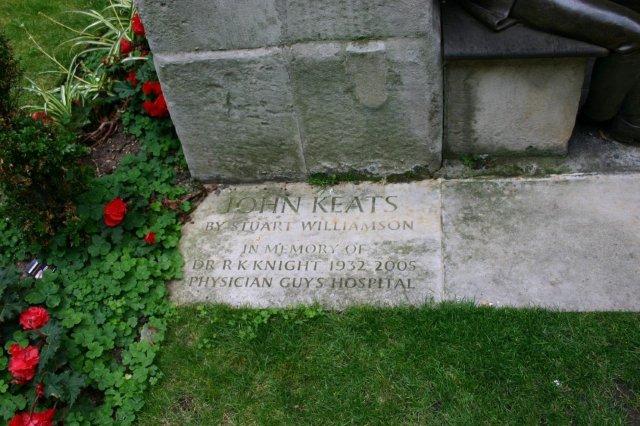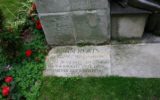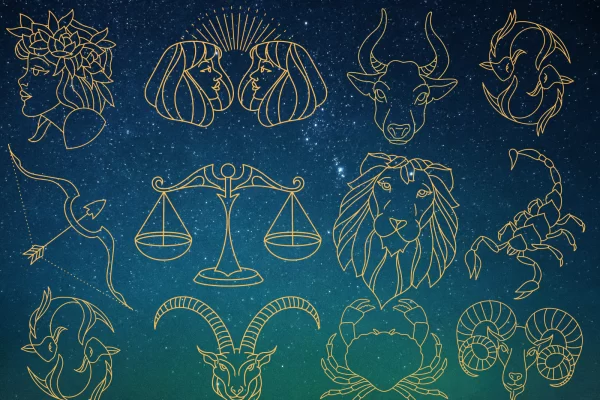Oscar Wild tells the connection between his poetry «The Grave of Keats» and the sonnet «Blue!» by John Keats
It is possible to see the original manuscript of the poem by Oscar Wilde at the Keats-Shelley House in Piazza di Spagna, and the sequence of events that gravitate around it, tell about intimate experiences, new friends, and a sad ending.
Hopeless romantics, lovers of Oscar Wilde and John Keats who want to re-experience in their own imagination the creative moment in which Oscar Wilde wrote in one go his sonnet in honor to John Keats, can admire the original manuscript in Rome, at the Keats-Shelley House in Piazza di Spagna.
The manuscript, which is shown in a case located in the hall, was given from Oscar Wilde to Emma Speed, Keats’s niece (daughter of his brother George) with a letter where he thanks her for the gift of the original manuscript of Keats’ sonnet «Blue!». After he met her, Oscar Wilde started an exciting time of his life full of artistic delights. Oscar Wilde described his encounter with Emma as one of the greatest pleasure and fortune that the life had given him.
All started in occasion of a chance encounter narrating in his essay «Keat’s sonnet on Blue!», appeared on the quarterly periodical The Hobby Horse and published in England in the July 1886 by Century Guild of Artists.
For a short period of time, Oscar Wilde and John Keats are linked by a thin thread of the fate through Keats’s niece Emma Speed. The encounter with Emma occurred during a conference held by Oscar Wilde in Louisville, Kentucky. Subject of the conference was the Mission of art in the19th and in there occasion Wilde mentioned Keats’s sonnet «Blue!» by, highlighting the sensitivity of the poet about colors harmonies. After the conference, a middle-aged lady, with gentle ways and soft voice, approached him, introduced herself and invited him in her house to show him some of his uncle John original manuscripts.
Oscar Wilde tells of having spent a few days with her, delighting himself by reading some letters that Keats had written to his brother George. A few months after this amazing encounter, Wilde receives a letter from Mrs. Speed in which she praises him to accept the original manuscript of sonnet «Blue!» he mentioned during his conference.
Oscar Wilde’s excitement was immense: «what you have given me is more golden than gold, more precious than any treasure this great country could yield me…… » he said in his thanking letter to Emma Speed (currently preserved in the Keats-Shelley House). Oscar Wilde held an original manuscript of the poet he was inspired by in his early writings and that he considered to be the father of the pre-raphaelite [1]school that led Oscar Wilde to the decadent aestheticism which he was one the highest representatives.
The story of this sonnet was rather eventful and painful ending , almost without breaking the thread of eternal suffering that shadowed over Keats’s life and works . How Oscar Wilde pointed in his essay, as the first line of the original manuscript in his possession was torn, the Keats’s sonnet mentioned in the magazine was the same published in the 1848 by Lord Houghton (Keats’s biographer) in his Life, Letters,and literary remains of John Keats.
Unfortunately, the original manuscript had went lost. When Oscar Wilde was imprisoned, his personal effects and his books were sold at auction and his house was sacked. In the list of objects there was one indicated as «Keats framed manuscript», and sold to 38 shillings. We know that Oscar Wilde hadit framed the original manuscript received by Emma Speed and exhibited with pride on the wall of his study…
Our journey re-discovering John Keats goes onand on and re-takes us into…
[1]The pre-raphaelites were a brotherhood founded in 1850 to take position against the arts conventions of the time in favor of a return to simplicity, spontaneity and beauty. There characteristics were identified in the medieval arts and in early Renaissance, which preceded the mature work of Raphael (from here the name of the brotherhood). In painting, the reaction of the brotherhood, was directed to the works of contemporary Royal Academy, considered blank and full of academic classicism; in the poetry, instead, the pre-raphaelite movement constantly tended to beauty, to the search of details and to metric tests, influenced by Keats’s works, to whom they looked up with ambition; in literature, the deep sense of freedom and spontaneous expression, took shape in particularly libertineworks, which in the future are going to spur the movement on to an aesthetic manner, whose Oscar Wilde is considered to be the major exponent.
SOURCES:
– Keats-Shelly Memorial Association, 2007, Il Labirinto
– http://www.oscarwildeinamerica.org/features/wilde-keats-letter.html
– http://www.oilproject.org/lezione/decameron-lisabetta-da-messina-analisi-4609.html






















